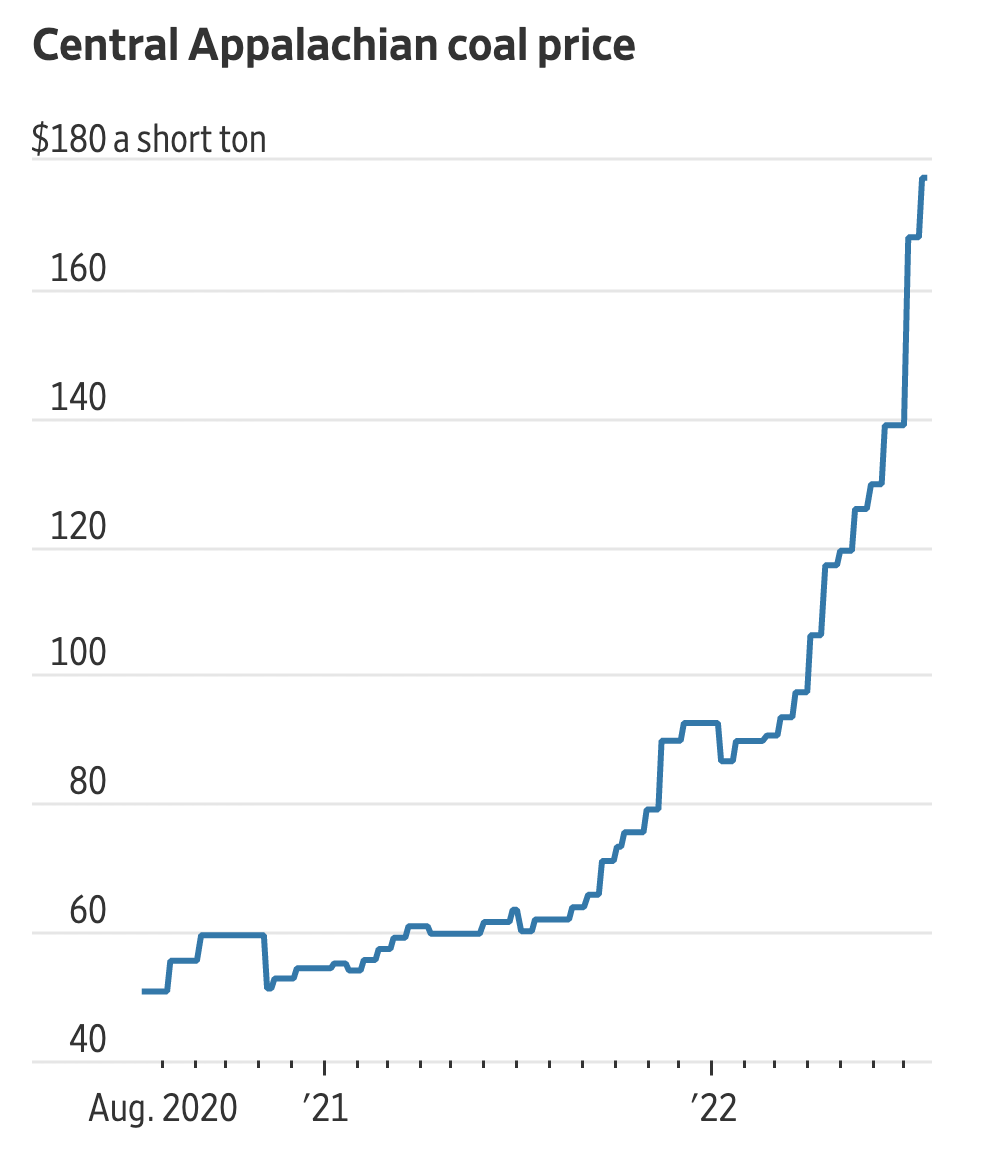Biden’s Actual Emergency
With one-third of the United States sweltering under severe summer heat warnings, President Biden is doing nothing to ensure adequate electricity capacity and sufficient natural gas and coal availability to keep generators operating under the large demand for air conditioning. Texas, with the largest wind capacity among the U.S. states, is calling for energy conservation to avoid rolling blackouts as wind resources have dropped due to the intense heat. Instead, Biden is considering potential wind power projects in the Gulf of Mexico, which are being proposed off the coast of Galveston, Texas, and off the coast of Lake Charles, Louisiana. Biden is also directing the Secretary of the Interior to “advance clean energy development” off the coasts of Florida, Georgia, South Carolina and North Carolina to ensure that “these southeast states will be able to benefit from good-paying jobs in the burgeoning offshore wind industry,” according to the White House.
Did anyone tell Biden that offshore wind is an expensive electricity technology that will only increase electricity prices further? The Energy Information Administration has already reported that wholesale electricity prices this summer in some areas will be 2 to 3 times greater than last summer. That increase is due to Biden’s energy policies that attempt to reach net zero carbon electricity by 2035, which have helped cause natural gas prices to triple.
Biden’s more immediate executive actions include $2.3 billion from the Federal Emergency Management Agency (FEMA) to help communities increase resilience to heat waves, drought, wildfires, floods and hurricanes; increased Occupational Safety and Health Administration enforcement to protect workers from heat illness and injuries; and $385 million to expand access to home air conditioners and community cooling centers through the federal energy assistance program for low-income families. The latter will only increase electricity demand which is already having trouble in several areas of the country. Biden should stop the onslaught of coal and nuclear retirements to ensure there is sufficient backup capacity to deal with his intermittent wind and solar units that are politically correct for his net zero future. Instead, he showed up in Somerset, Massachusetts on July 20 to celebrate the closure of New England’s largest coal-fired plant.
Natural Gas Prices
Natural-gas futures hit over $9 per million British thermal unit—a 14 year high—in June and then dropped when a Texas natural-gas export facility caught fire and sent prices falling as the export facility was to be offline until later this year and could not export LNG to Europe. But, in July, natural gas futures increased by 48 percent to $8.007 per million British thermal unit due to increased demand from air conditioning needed to abate the heat wave. Prices for natural gas in electricity and manufacturing sectors increased to more than twice the price of a year ago. Natural-gas prices surged this year as demand from utilities, manufacturers and overseas buyers, especially in Europe, outpaced supply growth and kept inventories well below normal. Facing shortages of rigs, drillers have generally held production relatively steady. Companies have been reluctant to invest in new infrastructure because Biden administration officials including climate envoy John Kerry have argued against them. The higher demand now could prevent enough fuel from being stored for the winter and increase the risk of price surges and shortages when natural gas is needed for heat.

In the past, if natural gas prices increased, electric utilities would turn to coal. But the U.S. power sector has retired about a third of its coal-fired generating capacity since 2010, which means that switching fuels is no longer an option for some utilities. Further, Obama’s and Biden’s energy and regulatory policies put a damper on coal production, resulting in shortages even for those utilities that still have operating coal plants. Those utilities must contend with coal prices that are about triple what they were a year ago because of low supplies and reduced mining.

The drought in the West reduced hydropower output this year, adding to the power strain and natural gas demand. The Energy Information Administration estimated that California hydroelectric generation would be about half its normal output this summer if the drought persists. That means more fossil fuel plants will be needed to compensate for the lower hydro generation.
Power producers may need to fire up plants on standby that are often less efficient and consume as much as twice the natural gas that newer generators use. But those newer generators are not politically correct under the Biden administration. The Environmental Protection Agency recently told the Tennessee Valley Authority, which was planning to replace a coal plant with natural gas, to go back to the drawing board for there were supposedly cheaper options. The options EPA was referring to are wind and solar power which are intermittent and unreliable. Further, they only appear to be cheaper because the cost of battery backup is not included when estimating their price. In fact, on the same day Biden visited the closed coal plant, the North American Electricity Reliability Council (NERC) reported that “batteries aren’t going to do it” and called for more natural gas infrastructure.
Conclusion
President Biden is making Americans suffer under increasing energy prices because of his policies against fossil fuels and toward expensive generating technologies such as offshore wind and storage batteries required to back up intermittent power from wind and solar units. His climate emergency is just another way to promote “green energy” that will not help secure affordable energy for Americans. Just as oil, gasoline, diesel, natural gas and coal prices have skyrocketed, so too will Americans be seeing increased electricity prices, particularly if Biden continues retiring coal and nuclear plants and tries to replace their energy with onshore and offshore wind, solar and storage batteries.
*This article was adapted from content originally published by the Institute for Energy

Speak Your Mind